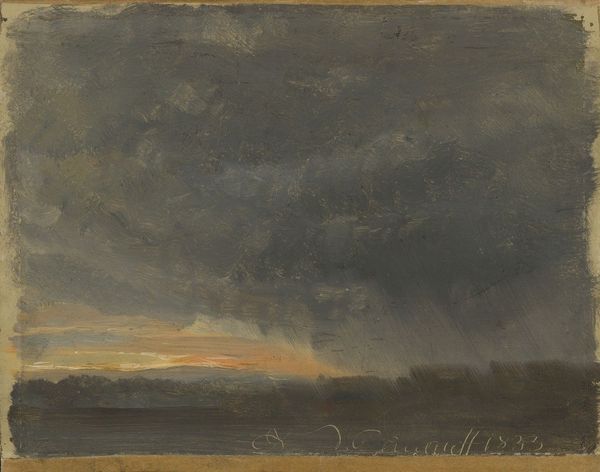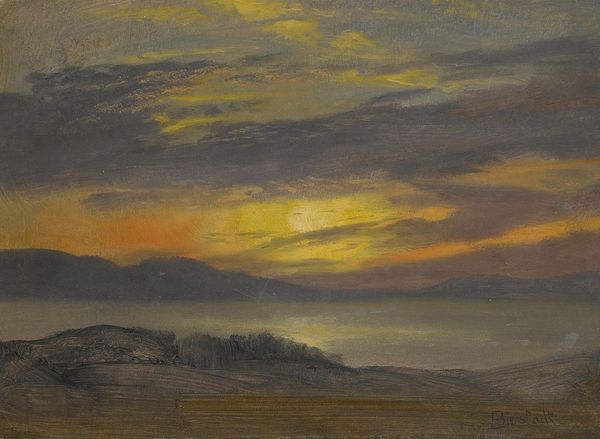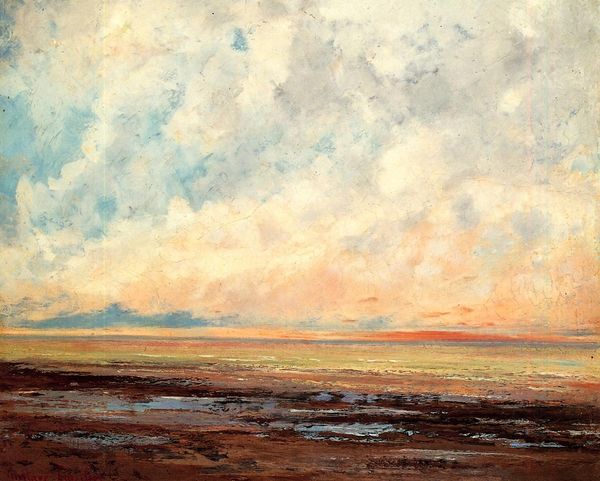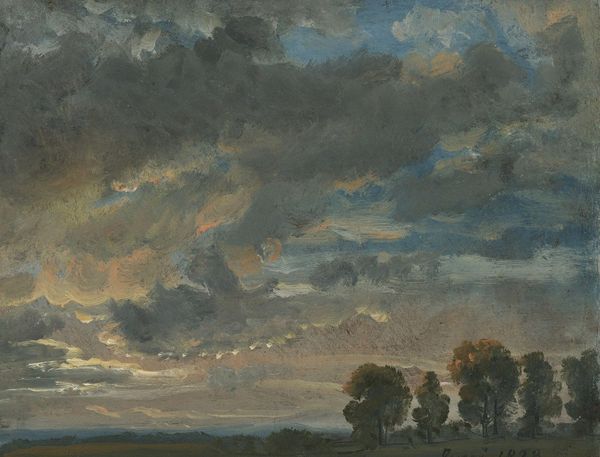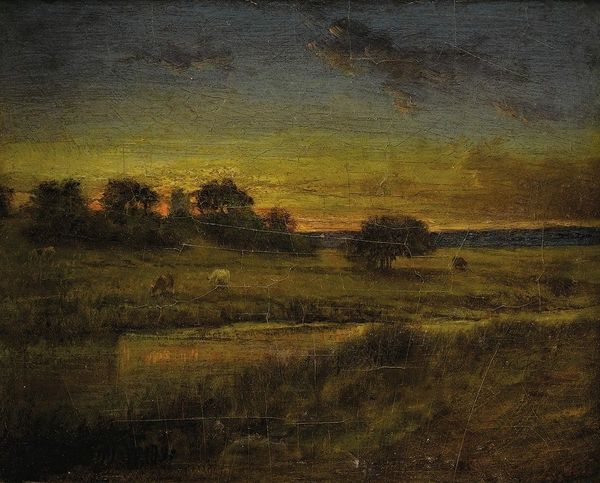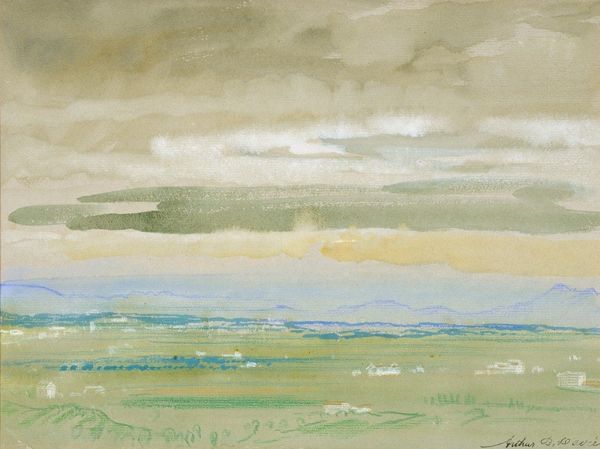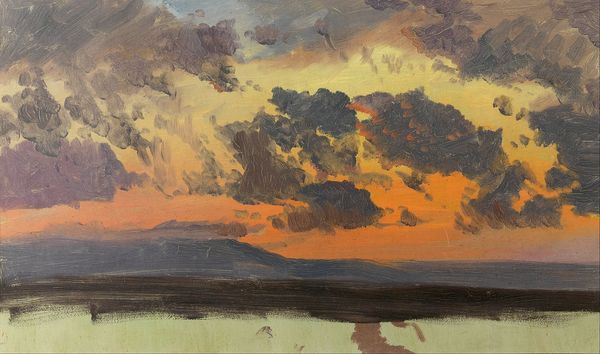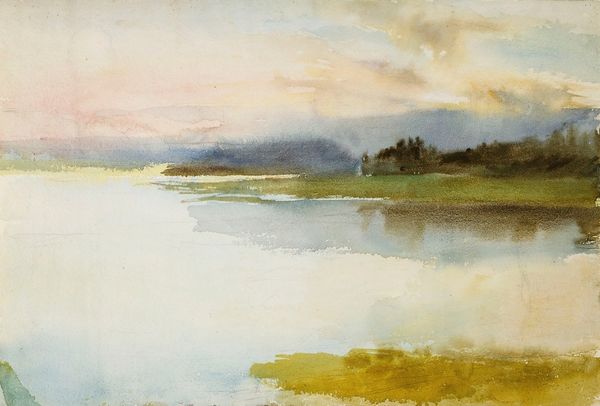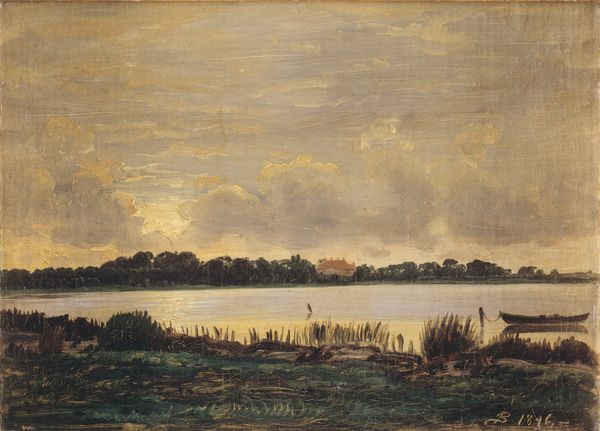
Copyright: Public domain
Curator: James Hamilton’s “Sunset on the Jersey Flats,” created in 1861, offers us a glimpse into the romantic sensibilities of 19th-century American landscape painting. The work appears to employ watercolor and oil, focusing primarily on rendering a vivid and dramatic skyscape over the flatlands. Editor: The contrast is so stark, almost unsettling. The fiery, almost apocalyptic, sunset juxtaposed with the quiet, still marshland below creates a very potent sense of impending drama and change. It almost feels allegorical, given the date it was painted. Curator: Indeed. Hamilton was known for his dramatic seascapes, and while this isn't a traditional seascape, his fascination with the sublime power of nature is evident. This work, along with others, served as critical examples of Luminism and even very early explorations into impressionism. Editor: And considering the Civil War was just beginning at that point, you have to wonder if that national anxiety wasn't influencing his choice of such a tumultuous sky. The “Jersey Flats” are quite literally flattened here beneath that imposing, brooding darkness. There’s very little sense of human presence, no activity. This evokes, for me, the feeling of abandonment. Curator: Perhaps. We need to recall the dominant artistic conventions of the period. Romanticism often emphasized the awe-inspiring, even frightening, aspects of the natural world. For Hamilton, the choice of the “Jersey Flats,” an area undergoing increasing industrialization, could signal a lament for lost natural beauty. Editor: Yes, absolutely, but to me that looming sky can’t be divorced from its contemporary sociopolitical context. Art doesn't exist in a vacuum, right? How can the image of that overbearing sky *not* make me think about the dark storm of war that was enveloping the nation when it was painted? Curator: Ultimately, that’s the beauty of experiencing art. Its meaning expands, alters through shifting contemporary lenses. The artistic prowess evident in the composition and dramatic skill deployed with color will stay consistent regardless, of course. Editor: It’s more than beautiful colors, though. This piece invites us to consider how historical events, personal experiences, and artistic techniques intersect, inviting the viewer into critical social consciousness and prompting thought about the intersectionality of human perception and the natural world. Thank you for the insights!
Comments
No comments
Be the first to comment and join the conversation on the ultimate creative platform.
